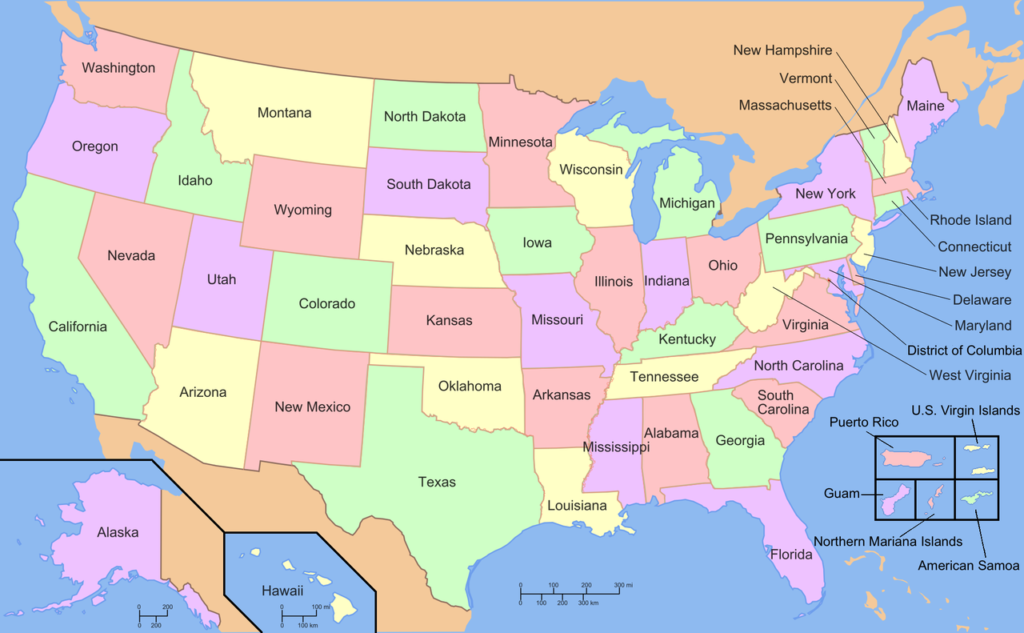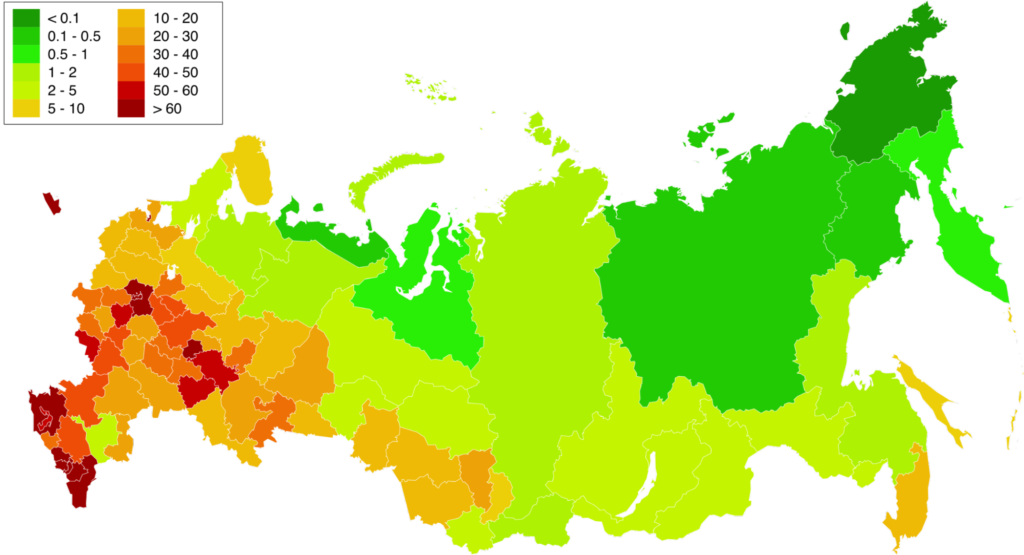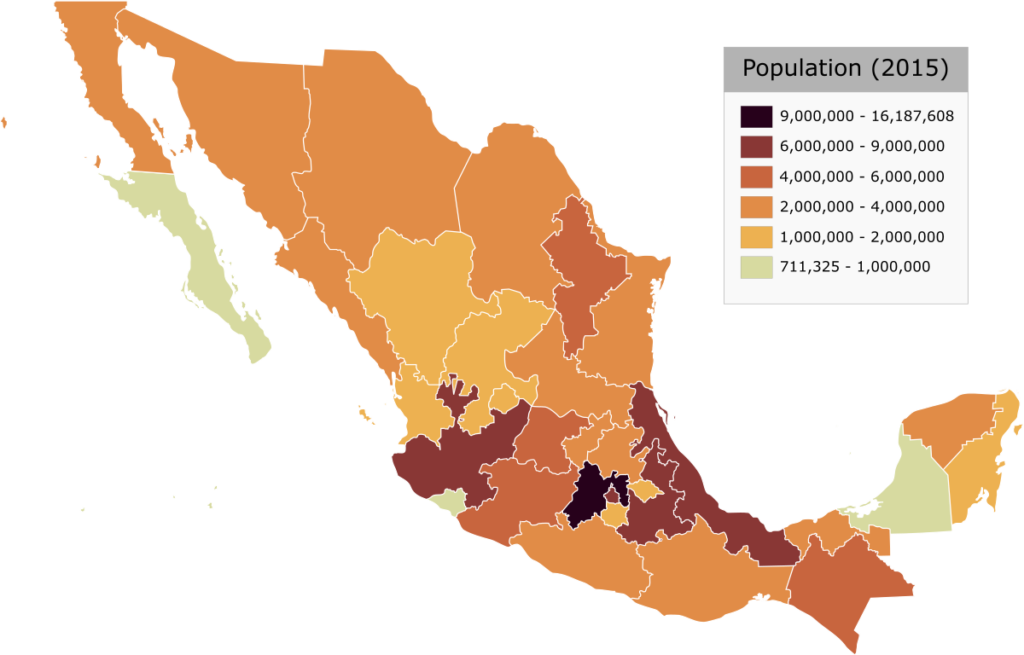Overpopulation

Overpopulation is the state in which the members of a certain species exceed the number that can be sustained by its environment. In terms of the human population, overpopulation is when the total number of people living at present exceeds the Earth’s capacity to sustain them.
Human populations around the world have grown exponentially in the last 50 years. In 2021, nearly 8 billion people are living on our planet in numerous overpopulated countries, and this number is expected to increase in the future.
The Problem of Overpopulation
Overpopulation is a problem often overlooked. Issues such as climate change, pollution, and water shortages are given more attention. However, overpopulation is a problem of equal importance, as it is one of the major contributors to these other global environmental issues. Overpopulation imposes greater demands on both land and the resources they provide. This has serious consequences on the environment, resulting in global environmental issues that affect many of the world’s economies and standards of living.
In developed countries, advancements in modern medicine and healthcare have resulted in people living much longer compared to in the past. Each year, an estimate of 80 million births happen around the world. In conjunction with the decline in death rates, this leads to the human population growing at an estimated pace of 1 billion every 12 years. This rate of population increase is much faster compared to those a century ago.
An increase in population coincides with an increase in the demand for resources such as food and water. In order to meet these increasing demands, people have developed various techniques and technologies to maximise both acquisition and production. As a result, the Earth’s resources are quickly being depleted for artificial products such as clothes, computers, and cars. In addition, the factories that make these products often release harmful emissions and chemical byproducts that cause environmental damage and promote climate change.
Increasing demands for industrial production also necessitates the need to seek out more resources. Agriculture and the raising of livestock especially have taken over large areas of land for food production. As a consequence, human activity and development encroach on many natural habitats. In turn, this has led to the loss of biodiversity as animal and plant species lose their homes. In the history of the Earth, extinction rates have never been as high as they are today. At present, global extinction rates are estimated to reach as high as 140,000 species every year.
In some regions of the world, overpopulation occurs as a result of external events such as war, famine, or natural disasters. When these events destroy previous habitations or make them unlivable, people are forced to seek refuge elsewhere. Certain regions may experience a sudden influx of in-migration, leading to a rapid increase in their population.
Causes of Overpopulation
Decrease in the mortality rate
Along with the Industrial Revolution’s development in industry and technology came great advances in the field of medicine. This scientific and medical progress allows humans to overcome many diseases, and prolong the lifespan of our populations. Vaccines and antibiotics have saved thousands of lives from ailments that would otherwise end in death. As a result, the death rate has fallen, while birth rates stay constant, leading to a rise in population.
Developments in food production
Both scientific research and technological development have led to an increase in the efficiency of agricultural production. This includes the cultivation of crops that can be planted year-round, disease and pest-resistant seeds, and pesticides. Fishing and the raising of livestock has also witnessed many improvements, further contributing to an increase in food production.
Migration and urban concentration
For some countries, migration and urban concentration are powerful factors that affect the composition of their populations. These are important not only for demographic growth but also for the economy and the generation of wealth. At present, more than half of the world’s population lives in cities that exceed 300,000 inhabitants. These populations are expected to continue growing until they make up 70% of the global population.
Effects of Overpopulation
Depletion of natural resources
The most significant effect of overpopulation is the exhaustion of the Earth’s natural resources. Our planet only has a limited capacity to provide for human needs and purposes. When the consumption of these resources exceeds the rate at which they can be replenished, this limit will be reached much sooner.
Environmental degradation
The careless and uninhibited consumption of natural resources and energy production by use of fossil fuels has many effects immediately detrimental to our environment. Some consequences include desertification, deforestation, changes in the water cycle, loss of habitat and biodiversity, and the extinction of numerous plant and animal species. Greenhouse gas emissions produced by artificial processes also contribute greatly to the greenhouse effect and global warming.
Overpopulated Countries
China

China is the world’s most populous country. At present, its population is a little over 1.4 billion people, with a majority of this number living in China’s eastern half. The dramatic increase in population has led to a decrease in many of its natural resources. In turn, this places strong restrictions on the expansion of the Chinese economy since it is dependent on its natural resources.
For 11 years, China’s capital city, Beijing, has experienced water shortages. In Shanghai, another of China’s major cities, a rise in population has led to the increased use of vehicles. This raises problems regarding air quality and air pollution.
Rapid population growth has also affected China’s education system. There are often not enough teachers and schools to cater to China’s youth. In response to this, cities such as Guangzhou have employed the use of joint lessons across different schools.
India

India, with a population of 1.3 billion, has the second-largest population in the world. With the exception of its deserts in the northwest and its mountains in the north, India has an exceptionally high population density throughout the country.
Overpopulation has led to a dramatic decline in India’s air quality, increasing the risk of airborne diseases and skin infections. New Delhi is the world’s most polluted city. It is estimated that breathing its air is comparable to smoking 50 cigarettes a day. In November 2017, Indian hospitals experienced a 20% increase in patients treated for various airborne diseases.
Many other cities in India have increased rates of cancer, stroke, heart disease, and heart attacks.
United States

The United States of America is the third most populous country in the world. Currently, its population is estimated to be 329.7 million. A large portion of the United States’ population is found in densely populated urban areas clustered along its east and west coasts. Its two most populous states, Texas and California, contribute to around 25% of its total population.
The population of New York, arguably the United States’ most famous city, has expanded in an uncommon way. In recent years, migration has caused a large increase in its population. Living costs and real estate in New York City have become extremely expensive. It is also very difficult to find employment in the city. New York has also suffered economic problems in previous years such as a recession.
Indonesia

The fourth most populous country in the world, Indonesia has a total population of 266 million. The island of Java, a part of the country, is one of the world’s most densely populated areas. Indonesian cities, including its capital Jakarta, are facing many significant issues regarding overpopulation.
In Jakarta, people spend an average of 15–35% of their income on transportation alone. In comparison, in other cities such as London and Singapore, people only spend an average of 5–8 % of their income on transportation.
Indonesia’s large population has also made it difficult for its citizens to have access to piped water. Only half of Indonesia’s population has piped water, the other half mainly relies on raw water supplies.
Pakistan

Pakistan holds the title of the world’s fifth-largest population with its 220 million inhabitants. The most densely populated area is Punjab province. Pakistan’s large population can be attributed to cultural attitudes and religious doctrine that promote having many children. Another reason is deficiencies in Pakistan’s education system and its low literacy rates. In cities such as Rawalpindi, the country’s poverty contributes to many health concerns for both mothers and their babies during pregnancy and child delivery.
Brazil

Brazil, the sixth most populous country in the world, has a population of 211.5 million. The majority of Brazil’s residents live along its Atlantic coast on the east. Brazil’s largest city, São Paulo, has an impressive population of 10 million inhabitants. This has certain implications on the economy of the city. One of which is the inequality in income distribution, as 34% of São Paulo’s citizens live below the poverty line. In addition to its overpopulation problem, Brazil is also challenged with issues such as paying off its foreign debt, crime, land distribution, and extreme poverty.
Nigeria

Ranking seventh among the countries with the greatest populations, Nigeria is inhabited by 206 million people and it is the African continent’s most populous country. It has also recently become Africa’s largest economy. Nigerian cities such as Lagos are currently struggling with a lack of available housing, resulting in the development of slums. Often, large families are cramped in one-bedroom apartments. Communal bathrooms and kitchens are shared by up to 50 people. The Nigerian government has carried out initiatives to encourage its citizens to have smaller families.
Bangladesh

The eighth most populous country in the world, Bangladesh has a total population of 168.6 million. Not only does it hold one of the world’s largest populations, but it is also one of the world’s most densely populated countries. Bangladesh suffers from poor infrastructure as a result of its overpopulation. One of these problems is apparent in their sewage system, as it is not properly equipped to handle the large amounts of water and waste produced by Bangladesh’s inhabitants. The city of Dhaka is one of the most densely populated cities in the world. Attempts to manage Bangladesh’s overpopulation problem have been initiated by its government, but have not been successful.
Russia

Russia is the world’s ninth-largest country by population size, with 146.7 million people. Russia’s population is less dense in the region of Siberia. Although this region makes up one-twelfth of the Earth’s total landmass, Siberia only has a population of roughly three people per square kilometre. The increase in Russia’s population is largely attributed to the influx of migrants from countries that were once part of the USSR. Usually, these migrants flock to cities such as Moscow, which at present has a population of 11.5 million people. The large number of people living in Moscow has led to the problem of a decrease in wages. In Moscow, 10% of inhabitants earn a living wage lower than 10,500 rubles. This amount is even lower than the city’s average wage.
Mexico

With 127.5 million inhabitants, Mexico is home to the world’s 10th largest population. It is estimated that one-fourth of Mexico’s population lives in or in the vicinity of its capital, Mexico City. Overpopulation in the country has led to rampant unemployment, as there are not enough jobs for all its citizens. Many Mexican citizens live in slums or are homeless. This is especially prominent in large cities such as Mexico City, Ecatepec, and Guadalajara.
Frequently Asked Questions
What is an overpopulated country?
An overpopulated country is one that has a population size that exceeds the available resources and infrastructure, resulting in strains on the economy, environment, and social systems.
What are some consequences of overpopulation?
Consequences of overpopulation can include food and water scarcity, increased poverty rates, inadequate healthcare and education resources, environmental degradation, strain on infrastructure, and social unrest.
Can overpopulated countries address their population challenges?
Yes, overpopulated countries can address their population challenges through various means, such as implementing family planning programs, promoting education and healthcare, improving infrastructure, and adopting sustainable development practices.
What are some examples of overpopulated countries?
Examples of overpopulated countries include India, China, Nigeria, Indonesia, Pakistan, Bangladesh, and Brazil, which have large populations relative to their available resources.
How can international cooperation help overpopulated countries?
International cooperation can support overpopulated countries by providing assistance in areas such as healthcare, education, sustainable development, and family planning initiatives. Sharing knowledge and resources can help alleviate the challenges associated with overpopulation.
Resources
CAUSES AND CONSEQUENCES OF OVERPOPULATION. (n.d.). Retrieved from Sustainability for All: https://www.activesustainability.com/sustainable-development/causes-consequences-overpopulation/
Overpopulation. (n.d.). Retrieved from Britannica: https://www.britannica.com/science/overpopulation
Overpopulation: The Causes, Effects And Potential Solutions. (n.d.). Retrieved from Ecavo: https://ecavo.com/overpopulation-causes-effects-solutions/
The top 10 countries with the world largest population: the disastrous effects on our planet. (n.d.). Retrieved from A Story Map:
https://www.arcgis.com/apps/MapJournal/index.html?appid=2849fd1434a64a0ea45d0b3d2e89a045
The World’s Most Populous Countries. (n.d.). Retrieved from Infoplease: https://www.infoplease.com/world/population/worlds-most-populous-countries
What is Overpopulation?. (n.d.). Retrieved from Conserve Energy Future: https://www.conserve-energy-future.com/causes-effects-solutions-of-overpopulation.php
Why is Over Population a Problem?. (n.d.). Retrieved from YPTE: https://ypte.org.uk/factsheets/overpopulation/why-is-over-population-a-problem





